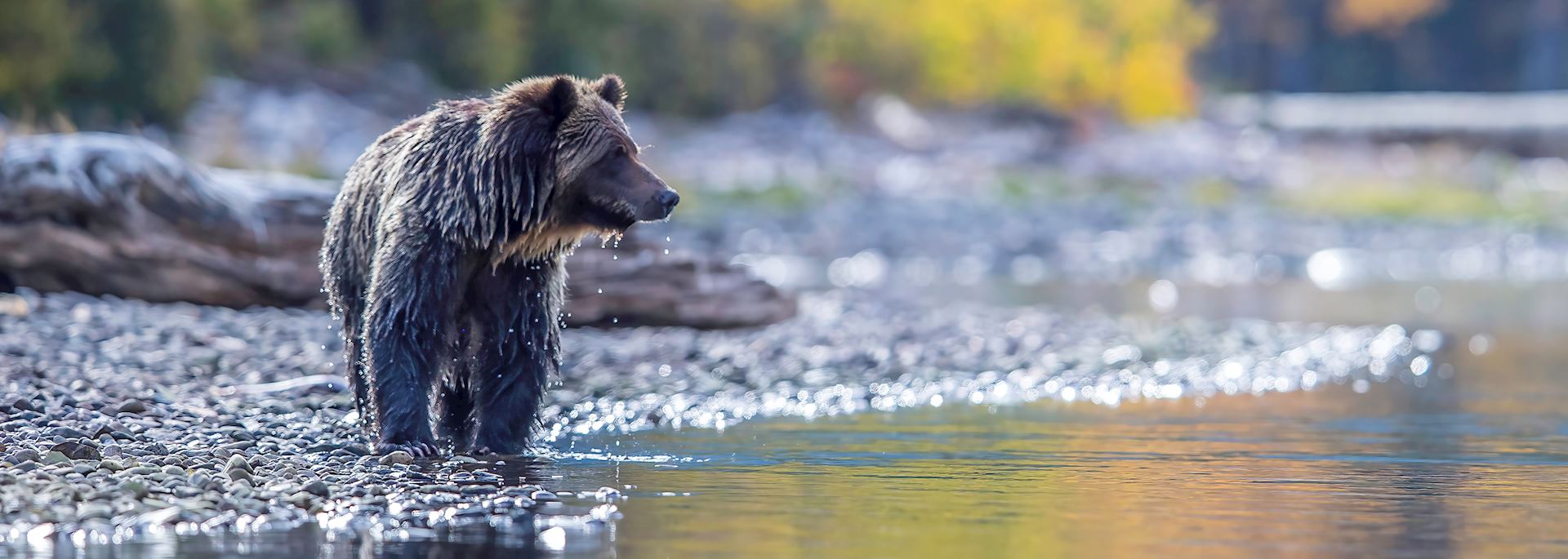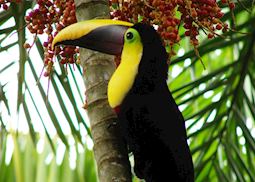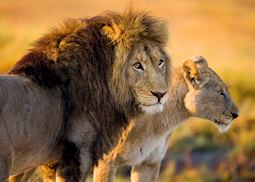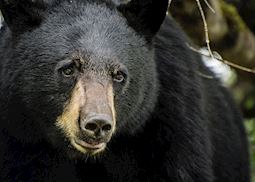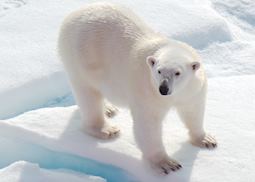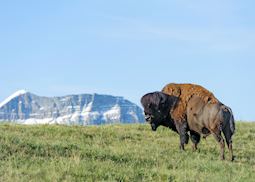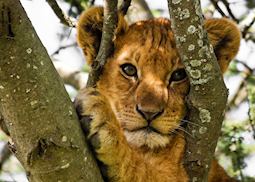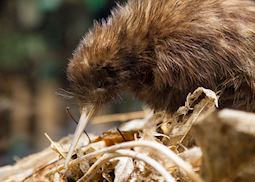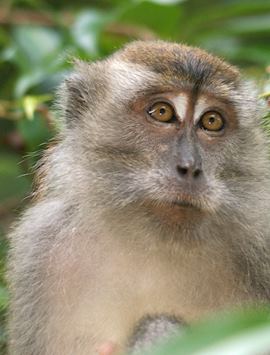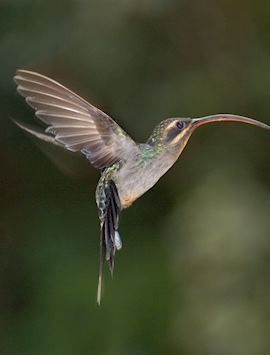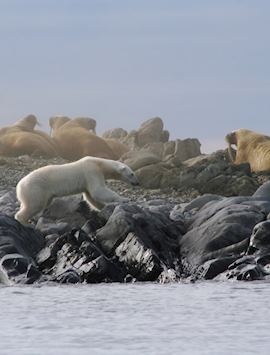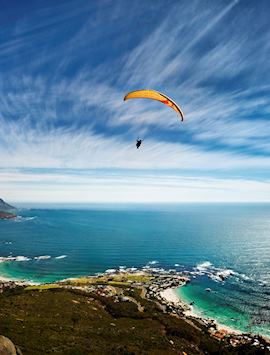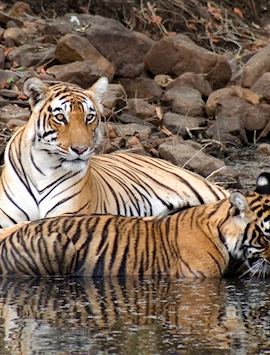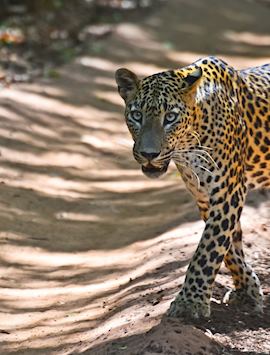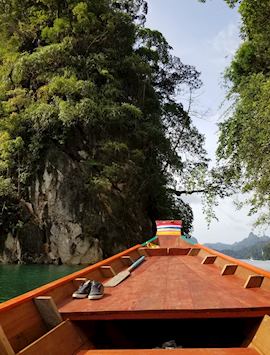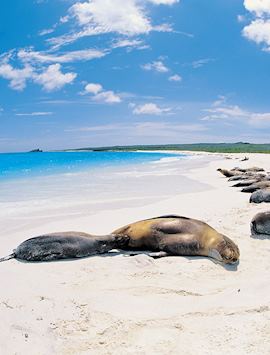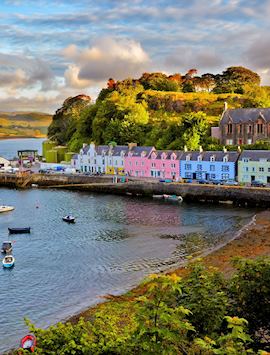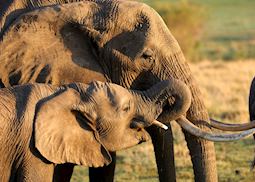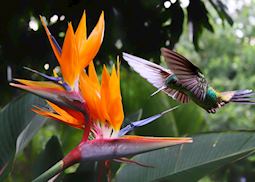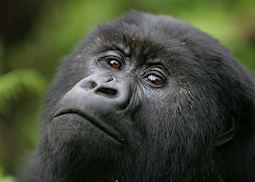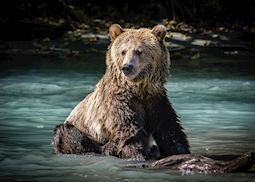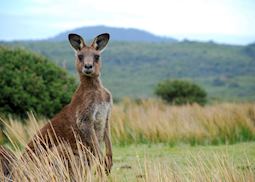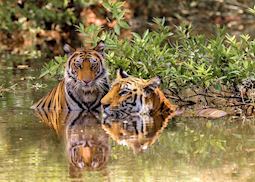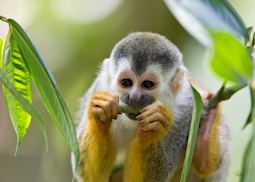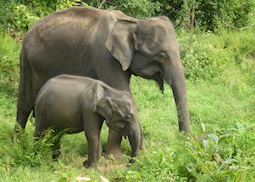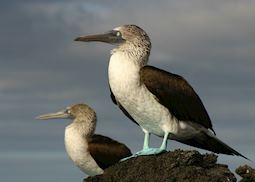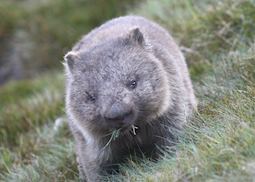Our tailor-made wildlife vacations put you close to the world's most heart-stirring animal encounters. Track tigers in India's national parks to a chorus of colorful birdlife. Drift along the Kinabatangan River in Borneo to spot orangutans in one of their last natural settings. Or find mountain gorillas in the tangled forests of Uganda or Rwanda.
Our specialists have personally experienced all these trips and will tell you the best ways to spot the animals you want to see, pick local guides who really know their stuff, and suggest hand-picked places to stay during your trip.

Start planning your tailor-made trip by contacting one of our Global Travel Advisors
-
617-223-4521617-223-4521
- Make an inquiry
Recommended destinations for a wildlife vacation
Our specialists can help you plan your wildlife trip, individually focusing on your tastes and interests, to the destinations below.
Our recommended wildlife itinerary ideas
Our itinerary ideas will give you a starting point for what your trip could entail. Treat them just as inspiration, as each trip is created uniquely for you and there are many more options available.
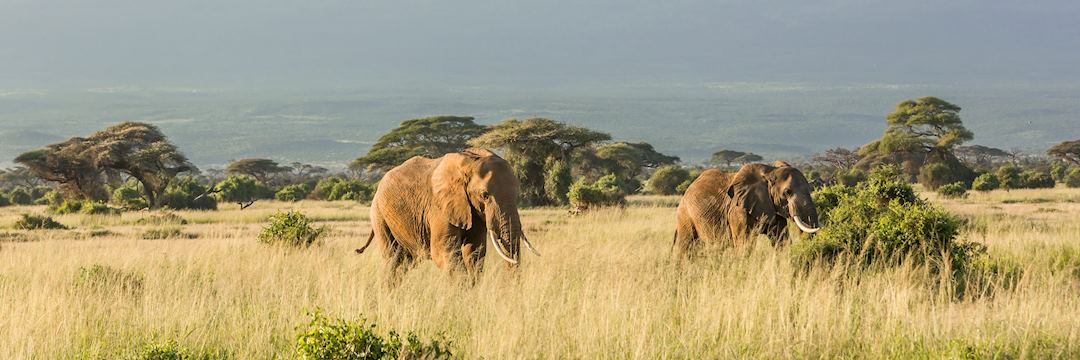
Tailor-made safaris
Our dedicated team of safari experts use their first-hand knowledge of the best safari lodges, camps and reserves to create tailor-made African safari trips that match your interests.Our expert guides to choosing your wildlife vacation
Penned by our specialists from their own travels, these guides aim to inspire you with suggestions of where to spend your vacation. Giving tips for what to experience and recommendations for where to stay, we share our ideas for the best destinations to consider.
-
Top 10 wildlife ideas ![Elephant in the Masai Mara]()
Top 10 wildlife ideas
Top 10 wildlife ideas
Take a look at our specialists' top ten wildlife ideas from around the world. Their highlights stretch from the Galapagos Islands through Africa and down to Antarctica.
Read this guide -
Birdwatching: 7 tips to help you plan the ideal trip ![Feeding Hummingbird, Costa Rica]()
Birdwatching: 7 tips to help you plan the ideal trip
Birdwatching: 7 tips to help you plan the ideal trip
Whether you’re in Africa, India or Latin America, seeing the region’s birdlife often plays a part in your trip. Here, our specialists share seven tips to get the most out of your birdwatching, from camera and binocular hints to off-radar birdwatching spots.
Read this guide -
Gorilla tracking: Rwanda or Uganda? ![Mountain gorilla, Volcanoes National Park]()
Gorilla tracking: Rwanda or Uganda?
Gorilla tracking: Rwanda or Uganda?
Tracking mountain gorilla in either Uganda or Rwanda is one of Africa's most memorable wildlife encounters. There are pros and cons to each country, but in each one, you will have an experience you will never forget.
Read this guide -
Seeing orangutan in Borneo: Malaysia or Indonesia? ![Baby orangutan at the Sanctuary]()
Seeing orangutan in Borneo: Malaysia or Indonesia?
Seeing orangutan in Borneo: Malaysia or Indonesia?
Although Borneo is the place to see orangutans in the wild, its political separation as part Malaysia, part Indonesia does leave you with choices for where to plan your orangutan-spotting trip. Our expert Sophie helps you decide: Indonesian or Malaysian Borneo?
Read this guide -
In the path of the grizzly: bear watching in Canada ![Grizzly bear, British Columbia]()
In the path of the grizzly: bear watching in Canada
In the path of the grizzly: bear watching in Canada
Canada is well-known for its wildlife, but the stars of the show are arguably its resident bears. These often solitary creatures can be difficult to find, but our Canada specialists can recommend intimate bear-watching experiences that allow you to see them in their natural habitat.
Read this guide -
Wildlife vacations in Tasmania ![Kangaroo]()
Wildlife vacations in Tasmania
Wildlife vacations in Tasmania
Australia expert Josh shares how to get up close and personal with Tasmania's unique wildlife. From furry wombats and bouncing wallabies to toothy Tasmanian devils and splashing blue penguins, here's where to go in Tasmania to see the wildlife you want to see.
Read this guide -
India’s wildlife: our safari guide to the central parks ![A mother tiger with her adolescent cub in Bandhavgarh National Park]()
India’s wildlife: our safari guide to the central parks
India’s wildlife: our safari guide to the central parks
India specialist Samantha explains why central India’s national parks are ideal for a wildlife vacation. She recommends how to experience the best tiger safari, and where you might glimpse sloth bears and leopards.
Read this guide -
Wildlife vacations in Costa Rica ![Squirrel Monkey, Manuel Antonio National Park, Costa Rica]()
Wildlife vacations in Costa Rica
Wildlife vacations in Costa Rica
From birds to basilisks, Costa Rica specialist Holly lets you in on the country’s wildlife highlights. She also explains where exactly to go to increase your chances of observing all Costa Rica’s rich biodiversity.
Read this guide -
Sri Lanka’s wildlife: safaris, jungles and plains ![Mother and baby elephants in the wild]()
Sri Lanka’s wildlife: safaris, jungles and plains
Sri Lanka’s wildlife: safaris, jungles and plains
An avid wildlife enthusiast, Sri Lanka specialist Seamus explains where to spot Sri Lanka’s leopards, sloth bears and elephants. He also shares his recommended experiences away from the usual parks, such as walking through primary rainforest and taking boat rides across secluded lakes.
Read this guide -
What to do in the Galapagos: our highlights guide ![Blue-footed boobies, Galapagos Islands]()
What to do in the Galapagos: our highlights guide
What to do in the Galapagos: our highlights guide
Find out about planning a first time trip to the Galapagos Islands. Embark on a luxury Galapagos cruise to explore the dramatic volcanic brown landscapes and fearless land and marine wildlife of this beautiful archipelago.
Read this guide -
Top 10 wildlife experiences in Australia ![Wombat, Cradle Mountain]()
Top 10 wildlife experiences in Australia
Top 10 wildlife experiences in Australia
From the Northern Territory down to Tasmania and everywhere in between, Australia is full of wildlife that you can’t find anywhere else. Australia specialist Tom suggests the best ways you can experience Australia’s unique animals in in their natural habitats.
Read this guide
